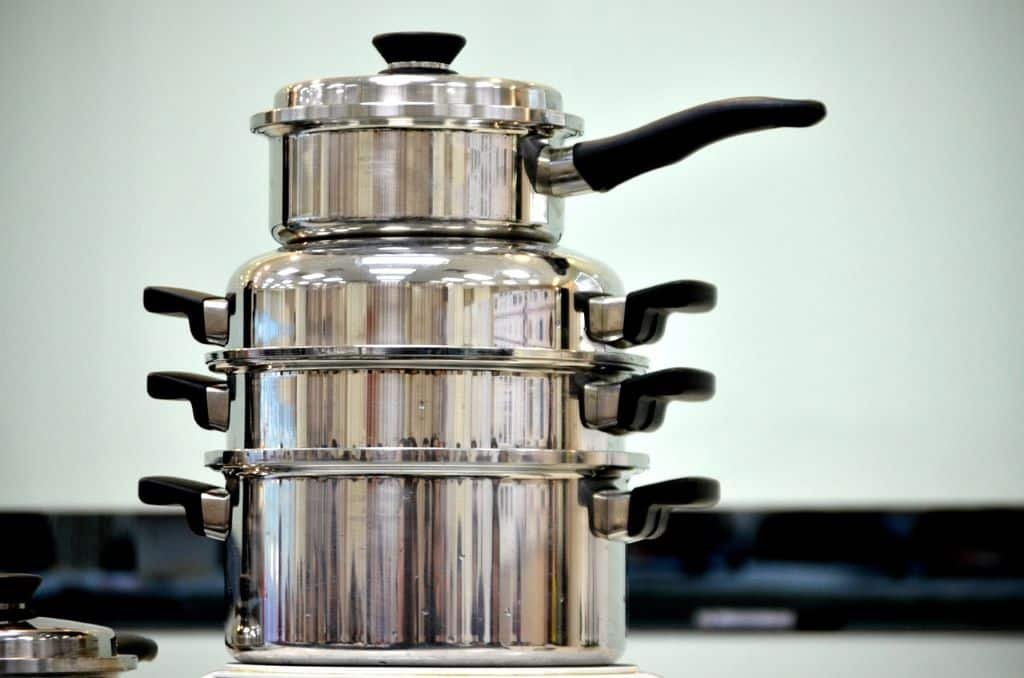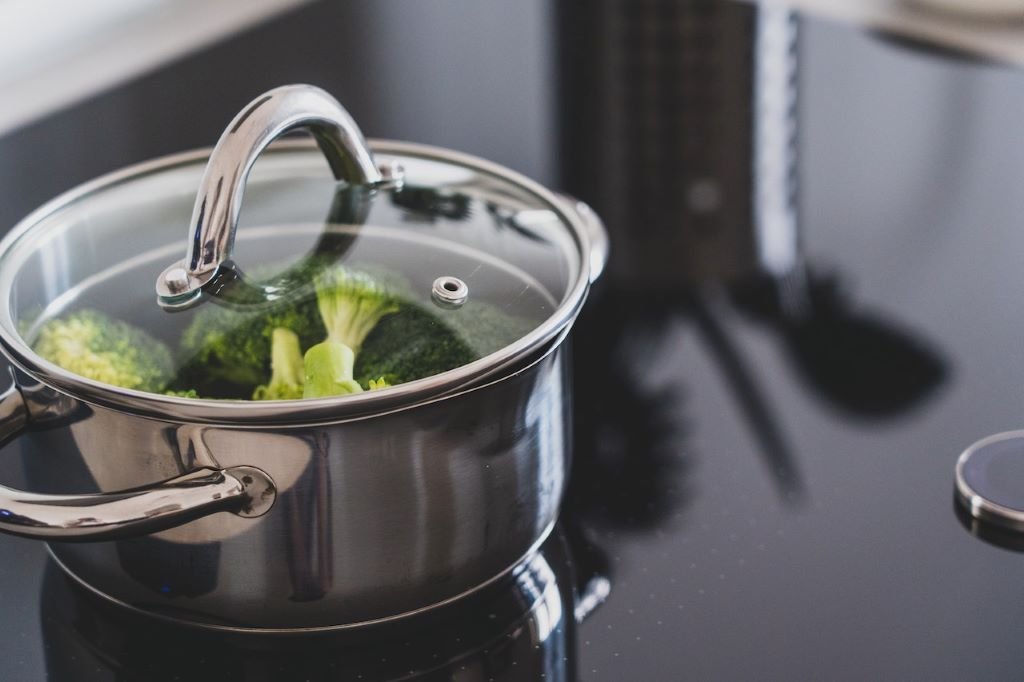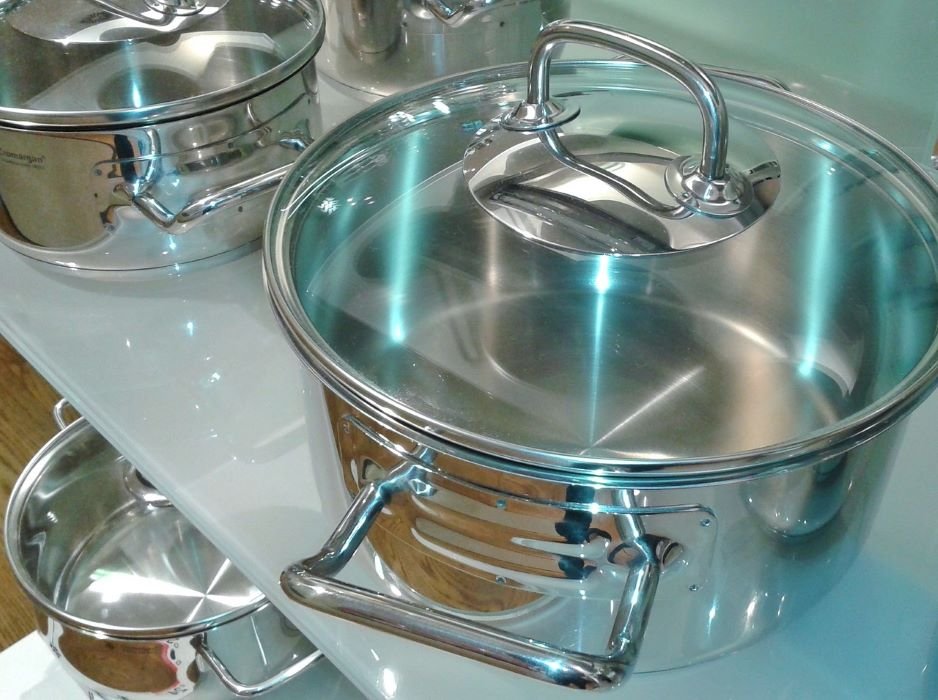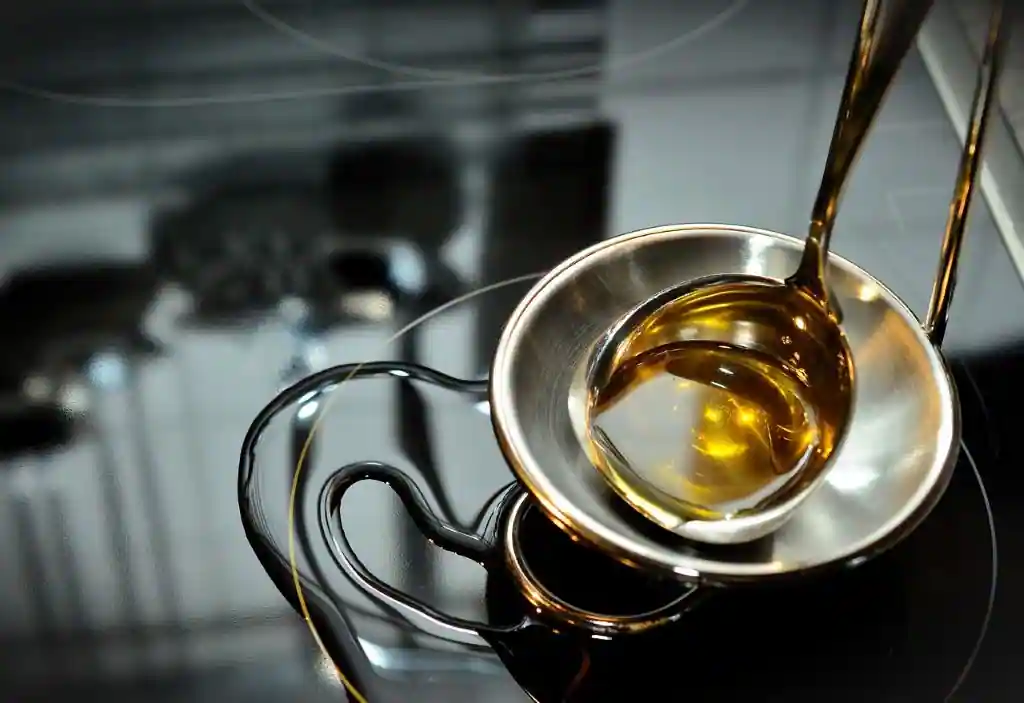If you’ve ever struggled with pots and pans that stick or don’t distribute heat evenly, it’s time to consider cooking with stainless steel. This versatile and durable material has become a staple in many kitchens thanks to its superior performance and sleek appearance.
In this article, we’ll explore the benefits of cooking with stainless steel, share some tips for using it effectively, and discuss why it’s a must-have for any aspiring chef. Say goodbye to those frustrating cooking mishaps and hello to a world of culinary possibilities with stainless steel!
Stainless steel cookware is a popular choice among home chefs for many reasons. Its durability and longevity, heat distribution, non-reactive surface, versatility, and ease of cleaning make it a valuable addition to any kitchen.
In this comprehensive guide, you will learn all about the benefits of cooking with stainless steel, how to choose the right stainless steel cookware, how to use it properly, some delicious recipes to try, maintenance and care tips, common misconceptions, and helpful tips and tricks. So let’s dive in and discover the wonderful world of cooking with stainless steel!
Durability and Longevity
One of the key benefits of stainless steel cookware is its durability and longevity. Unlike other materials, stainless steel is resistant to rust, corrosion, and staining, making it a long-lasting investment for your kitchen.
You can expect your stainless steel cookware to withstand constant use, high temperatures, and even the occasional accidental drop without losing its quality. Whether you’re a beginner in the kitchen or a seasoned chef, stainless steel cookware is built to withstand the test of time.
Heat Distribution
Another advantage of cooking with stainless steel is its excellent heat distribution. Stainless steel cookware is typically constructed with multiple layers of metal, including aluminium or copper, sandwiched between stainless steel. This layered construction allows for even heat distribution across the entire cooking surface, ensuring that your food cooks uniformly.
Whether you’re frying, sautéing, or simmering, stainless steel cookware will help you achieve consistent results every time.
Non-Reactive Surface
Stainless steel is a non-reactive material, which means it won’t interact with acidic or alkaline foods during cooking. This is especially important when you’re working with ingredients like tomatoes, citrus fruits, or vinegar, as reactive materials can impart unwanted flavors or discoloration to your dishes.
With stainless steel cookware, you can cook a wide variety of ingredients without worrying about any negative reactions, allowing the natural flavors of your food to shine through.
Versatility
Stainless steel cookware is incredibly versatile, making it suitable for all types of cooking methods. From stovetop to oven, you can use stainless steel pots, pans, and baking sheets for various cooking techniques such as frying, sautéing, boiling, roasting, baking, and more.
Its versatility also extends to compatibility with different heat sources, including gas, electric, and induction cooktops. With stainless steel cookware, you have the freedom to explore and experiment with various recipes and cooking styles.
Easy to Clean
Keeping your cookware clean is a breeze when you’re using stainless steel. Its smooth non-porous surface helps prevent food particles from sticking, making it easy to scrub off any residue.
Stainless steel is also dishwasher safe, allowing for hassle-free cleaning when you’re short on time. However, if you prefer to hand wash your cookware, a gentle scrub with warm soapy water is all it takes to restore its shine.
With proper care, your stainless steel cookware will continue to look pristine and perform optimally for years to come.
Now that you understand the benefits of cooking with stainless steel, let’s explore how to choose the right stainless steel cookware for your needs.
Choosing the Right Stainless Steel Cookware
Grade of Stainless Steel

When selecting stainless steel cookware, it’s important to consider the grade of stainless steel used in its construction. The grade represents the quality and composition of the stainless steel, with the most common grades being 18/10 and 18/8. These numbers signify the percentages of chromium and nickel present in the stainless steel. The higher the numbers, the more resistant the cookware will be to corrosion and staining.
Opting for a higher-grade stainless steel ensures that your cookware will maintain its integrity over time.
Cookware Base
The base of your stainless steel cookware plays a crucial role in heat distribution. Look for cookware with a thick and encapsulated base, preferably made of aluminium or copper.
These materials have excellent heat-conducting properties and will help distribute heat evenly throughout the cooking surface. An encapsulated base also prevents hot spots, ensuring that your food cooks consistently and to perfection.
Handles and Knobs
Consider the design and material of the handles and knobs on your stainless steel cookware. Look for handles that are riveted or welded securely to the body of the cookware. This ensures a sturdy and durable connection, allowing you to handle your cookware with ease.
It’s also essential to choose handles that stay cool to the touch during cooking, providing comfort and safety while maneuvering the cookware.
Lids
Stainless steel cookware often comes with accompanying lids. Opt for lids that fit snugly on the cookware, creating a tight seal to lock in heat and moisture.
Glass lids are a popular choice as they allow you to monitor the cooking progress without having to lift the lid. Ensure that the lid has a handle or knob that remains cool to the touch, making it easy to remove during cooking.
Brands to Consider
When it comes to stainless steel cookware, there are several reputable brands to consider. Some popular options include All-Clad, Cuisinart, Calphalon, and Tramontina. These brands are known for their quality craftsmanship, durable construction, and excellent heat distribution.
By choosing a trusted brand, you can have confidence in the performance and longevity of your stainless steel cookware.
Now that you have the right stainless steel cookware, let’s learn how to make the most out of it.
Using Stainless Steel Cookware

Seasoning the Cookware
While stainless steel cookware doesn’t require seasoning like cast iron, it’s beneficial to season it before the first use. Seasoning helps create a non-stick surface and enhances the overall performance of your cookware.
To season your stainless steel cookware, simply coat the cooking surface with a thin layer of oil and heat it over medium heat until the oil begins to smoke. Once the smoking point is reached, remove the cookware from the heat, allow it to cool, and wipe away any excess oil. Your cookware is now ready for use.
Preheating
Before cooking with stainless steel, it’s important to preheat the pan. Preheating ensures that the pan is evenly heated before adding ingredients, helping to prevent food from sticking.
To preheat, place the empty stainless steel pan on the stovetop over medium heat for a few minutes. You can test if the pan is hot enough by flicking a few drops of water onto the surface. If the water droplets sizzle and evaporate almost immediately, the pan is ready to use.
Proper Heat Settings
Maintaining the right heat setting is crucial when cooking with stainless steel. While stainless steel is known for its excellent heat conductivity, it can also heat up quickly and retain heat effectively.
Start by heating the pan on medium heat, then adjust as needed. High heat may cause the food to burn or stick, while low heat may result in uneven cooking. Finding the right balance will ensure that your food is cooked to perfection without any hot spots.
Avoiding Food Sticking
One of the common concerns when cooking with stainless steel is food sticking to the pan. However, with the right technique, you can easily prevent this from happening.
Ensuring that the pan is properly preheated and applying a thin layer of oil or fat to the cooking surface before adding ingredients helps create a natural non-stick surface.
You can also use cooking sprays or butter for added lubrication. Additionally, allowing the food to develop a golden brown crust before flipping or stirring can help prevent sticking.
Preventing Discoloration
Although stainless steel is resistant to staining, it can develop discoloration over time, particularly when used at high heat. To prevent discoloration, avoid cooking acidic ingredients for prolonged periods at high temperatures.
Acidic foods like tomatoes or lemon juice can cause a reaction with the stainless steel. If discoloration occurs, it can usually be removed with a mixture of vinegar and water or a specialized stainless steel cleaner.
Regular maintenance and proper cooking techniques will help maintain the appearance of your cookware.
Cooking Techniques
Stainless steel cookware is incredibly versatile and can be used for various cooking techniques. From frying and sautéing to boiling and simmering, stainless steel pans and pots can handle it all.
The even heat distribution makes it ideal for searing meats, achieving a crispy and golden brown exterior. It’s also great for simmering delicate sauces, as the non-reactive surface won’t affect the flavors.
Stainless steel is oven-safe, allowing you to finish dishes in the oven or keep them warm until serving. The possibilities are endless when it comes to cooking with stainless steel.
Next, let’s explore a range of delicious recipes that can be prepared using stainless steel cookware.
Recipes for Stainless Steel Cookware
Skillet Recipes
- Classic Steak Sear: Heat your stainless steel skillet over high heat, season your steak with salt and pepper, and sear it on each side for a few minutes until a golden crust forms. Finish it off in the oven for your desired level of doneness.
- Sautéed Garlic Shrimp: Heat olive oil in the skillet, add minced garlic and shrimp, and cook until the shrimp turn pink and opaque. Squeeze some fresh lemon juice and sprinkle with chopped parsley before serving.
Saucepan Recipes
- Creamy Tomato Basil Soup: In a saucepan, sauté onions and garlic. Add canned tomatoes, vegetable broth, and fresh basil. Simmer for 20 minutes, then blend until smooth. Stir in heavy cream and season to taste.
- Homemade Alfredo Sauce: Melt butter in a saucepan, add minced garlic and cook until fragrant. Stir in heavy cream, grated Parmesan cheese, and season with salt and pepper. Cook until the sauce thickens and coats the back of a spoon.
Stockpot Recipes
- Hearty Vegetable Soup: In a stockpot, sauté onions, carrots, celery, and garlic until softened. Add vegetable broth, diced potatoes, green beans, corn, and your choice of vegetables. Simmer until the vegetables are tender and flavors meld together.
- Spaghetti Bolognese: Brown ground beef in the stockpot, then add onions, garlic, and diced tomatoes. Season with Italian herbs, salt, and pepper. Simmer for an hour, then serve overcooked spaghetti noodles.
Baking Sheet Recipes
- Herb-Roasted Chicken: Rub chicken breasts with olive oil, sprinkle with your favorite herbs, and place them on a baking sheet. Roast in the oven until the chicken is cooked through and golden brown.
- Roasted Vegetables: Toss your choice of vegetables with olive oil, salt, and pepper, and spread them evenly on a baking sheet. Roast until the vegetables are tender and slightly caramelized.
Roasting Pan Recipes
- Slow-Roasted Goat Leg: Rub the Goat leg with a mix of salt, pepper, and your favorite spices. Place it in the roasting pan and roast at a low temperature for several hours until the meat is tender and falls apart easily.
- Herb-Roasted Potatoes: Toss halved baby potatoes with olive oil, minced garlic, chopped fresh herbs, salt, and pepper. Spread them on a roasting pan and roast until the potatoes are golden and crispy.
Now that you have some delectable recipes to try, let’s explore how to properly maintain and care for your stainless steel cookware.
Maintenance and Care of Stainless Steel Cookware

Cleaning Tips
Cleaning your stainless steel cookware is a simple process. Start by allowing the cookware to cool down after cooking. Then, rinse it with warm water to remove any excess oil or food particles.
Use a mild dish soap and a non-abrasive sponge or cloth to gently scrub the surface, focusing on any stains or stuck-on residue. Rinse thoroughly with warm water to remove any soap residue, and dry with a soft towel or air dry.
Avoid using harsh abrasives or metal scouring pads, as they can scratch the surface of your cookware.
Removing Stains and Discoloration
If you notice stains or discoloration on your stainless steel cookware, there are a few methods you can try to restore its shine. One option is to create a paste using equal parts baking soda and water. Apply the paste to the stained area, let it sit for a few minutes, and then scrub gently with a non-abrasive sponge or cloth. Rinse thoroughly and dry.
Another method is to use vinegar and water. Mix equal parts vinegar and water in the cookware, bring it to a boil, and let it simmer for a few minutes. The acid in the vinegar will help break down the stains. Rinse thoroughly and dry.
Polishing the Surface
To maintain the luster of your stainless steel cookware, occasional polishing can help. There are dedicated stainless steel cleaners available in the market that can effectively remove fingerprints, water spots, and smudges.
Apply a small amount of the cleaner to a soft cloth and polish the cookware in circular motions. Follow the manufacturer’s instructions for the specific cleaner you’re using.
It’s important to note that polishing is purely for aesthetic purposes and doesn’t affect the performance of your cookware.
Storing Stainless Steel Cookware
Proper storage is key to preserving the quality and longevity of your stainless steel cookware. Before storing, ensure that the cookware is completely dry to prevent any moisture buildup that may lead to rust. To avoid scratching, stack the cookware with a protective layer, such as a soft cloth or felt pad, in between each piece.
If you’re short on cabinet space, consider hanging your cookware on a pot rack or using a dedicated cookware organizer to keep everything within easy reach.
Common Mistakes to Avoid
To get the most out of your stainless steel cookware and prolong its lifespan, avoid the following common mistakes:
- Using high heat for an extended period: Stainless steel is a great conductor of heat, so you don’t need to crank up the heat to the highest setting. Using excessive heat for a long time can damage the cookware and cause food to stick or burn.
- Using metal utensils: While stainless steel is durable, using metal utensils can scratch the surface. Opt for silicone, wooden, or nylon utensils that won’t cause any damage.
- Not properly preheating the pan: Preheating your cookware helps create a natural non-stick surface. Skipping this step may result in food sticking to the pan.
- Using abrasive cleaners or scouring pads: Harsh cleansers or metal scouring pads can scratch the surface of your cookware. Stick to non-abrasive cleaners and soft sponges or cloths.
- Not drying the cookware thoroughly: Moisture can lead to rust formation, so ensure that your cookware is completely dry before storing it.
Now that we’ve covered the maintenance and care of stainless steel cookware, let’s address some common misconceptions associated with cooking with stainless steel.
Common Misconceptions about Cooking with Stainless Steel
Food Sticking
One of the most prevalent misconceptions about stainless steel cookware is that food will inevitably stick to the pan. While it’s true that stainless steel doesn’t have non-stick properties like Teflon or ceramic coatings.
Properly preheating the pan, using sufficient oil or fat, and employing techniques like waiting for a golden crust to form before flipping can greatly reduce the risk of sticking. With a little practice and the right techniques, you’ll be able to cook with stainless steel without any major issues.
Reactivity with Acidic Foods
Another misconception is that stainless steel reacts with acidic foods, altering their taste or causing discoloration. This can occur if the cookware is of poor quality or damaged. High-quality stainless steel cookware is non-reactive.
The layered construction, with stainless steel on the cooking surface, prevents any reaction between the food and the metal. As long as you have good quality stainless steel cookware, you can cook acidic foods without any concerns.
Difficult to Clean
Contrary to popular belief, cleaning stainless steel cookware is relatively easy. While it’s true that stainless steel can develop stains or discoloration over time, these can be easily removed with the proper care and cleaning techniques mentioned earlier.
The key is to avoid using harsh abrasives or scouring pads that can scratch the surface. Regular cleaning and gentle scrubbing with mild dish soap and a non-abrasive cloth or sponge will keep your stainless steel cookware looking pristine.
Not Suitable for Induction Cooktops
Many people believe that stainless steel cookware is not compatible with induction cooktops. However, this is not the case. Stainless steel itself is not magnetic, which is why some types of stainless steel cookware won’t work on an induction cooktop.
However, many manufacturers create stainless steel cookware with a magnetic base or encapsulated layers of magnetic materials, allowing them to be used on induction cooktops. When purchasing stainless steel cookware for an induction cooktop, look for the induction-compatible symbol to ensure compatibility.
Now that we’ve debunked some common misconceptions, let’s explore some tips and tricks that will enhance your cooking experience with stainless steel.
Tips and Tricks for Cooking with Stainless Steel

Preheating the Pan
Properly preheating your stainless steel pan is essential for achieving a non-stick surface. Before adding any ingredients, allow the pan to heat up over medium heat for a few minutes. This will ensure that the heat is evenly distributed and will significantly reduce the chances of your food sticking to the pan.
Using Fat or Oil
To further prevent food from sticking to your stainless steel pan, it’s important to use a sufficient amount of fat or oil. The oil creates a barrier between the food and the cooking surface, minimizing the risk of sticking.
Choose oils with high smoke points, such as canola or avocado oil, for high-heat cooking methods. Remember to spread the oil evenly across the surface of the pan before adding your ingredients.
Layering Ingredients
When cooking with stainless steel, it’s essential to layer your ingredients properly to ensure even cooking. Start with ingredients that require a longer cooking time, such as onions or root vegetables, and then add quicker-cooking items like leafy greens or delicate proteins.
Layering ingredients allows for even heat distribution and prevents certain items from overcooking or undercooking.
Adjusting Heat During Cooking
Stainless steel cookware retains heat well, so it’s important to adjust the heat as needed during the cooking process. If you notice that the food is browning too quickly or the pan is getting too hot, reduce the heat to prevent burning or sticking.
Similarly, if you find that the food is cooking too slowly, increase the heat slightly for more efficient cooking.
Using Utensils and Tools
When cooking with stainless steel, it’s crucial to use the right utensils and tools to avoid scratching the surface. Opt for silicone, wooden, or nylon utensils that won’t damage the stainless steel.
Metal utensils should be avoided, as they can leave marks or scratches on the cookware. Additionally, using tools with a flat edge, such as a spatula or flat-tipped tongs, can help release food from the pan more easily.
Now that you’re armed with all the knowledge and tips for cooking with stainless steel, let’s explore some alternative uses for your stainless steel cookware.
Alternative Uses for Stainless Steel Cookware
In the Oven
Stainless steel cookware is oven-safe, making it perfect for dishes that require finishing or baking in the oven. From roasts and casseroles to lasagnas and gratins, your stainless steel pans can handle the heat.
Simply transfer your partially cooked dish from the stovetop to the oven, and let it bake to perfection.
As a Serving Dish
Stainless steel cookware can also double as a stylish serving dish. Its sleek and shiny appearance adds an elegant touch to any dinner table. Use your stainless steel pots or pans to serve dishes such as pasta, stews, or roasted vegetables.
The excellent heat retention properties of stainless steel will also help keep your food warm throughout the meal.
For Food Storage
Stainless steel cookware is great for storing leftover food. Its non-reactive surface ensures that the flavors of your food will remain intact, without imparting any unwanted tastes.
After allowing your food to cool, simply transfer it to a stainless steel container with an airtight lid and store it in the refrigerator.
Stainless steel containers also make for an eco-friendly and durable alternative to plastic containers.
For Chilling Drinks
Stainless steel ice buckets or beverage containers are perfect for chilling drinks during parties or gatherings. The insulating properties of stainless steel help keep your beverages cold for extended periods.
Fill your stainless steel ice bucket with ice cubes and a selection of your favorite soft drinks and let your guests help themselves to perfectly chilled beverages throughout the event.
Mastering the Art of Cooking with Stainless Steel Cookware
Summary
Cooking with stainless steel offers numerous benefits, from its durability and longevity to its excellent heat distribution and non-reactive surface. By choosing the right stainless steel cookware, and properly using and maintaining it, you can enjoy a lifetime of delicious and perfectly cooked meals.
Choosing the Right Cookware
- Selecting the appropriate grade of stainless steel.
- Considering cookware base, handles, knobs, and lids.
Essential Techniques for Success
- Seasoning the stainless steel cookware for enhanced performance.
- Proper preheating and heat settings for optimal cooking.
- Preventing food from sticking to the cookware.
Exploring Versatility Through Recipes
- Trying out a variety of delicious recipes using stainless steel cookware.
- Showcasing the adaptability of stainless steel in different cooking styles.
Maintenance and Care for Longevity
- Following proper cleaning and care procedures to preserve the cookware’s appearance.
- Extending the lifespan of your stainless steel cookware.
Embarking on Culinary Adventures
- Dispelling common misconceptions about cooking with stainless steel.
- Embracing valuable tips, tricks, and alternative uses.
- Gaining confidence to create impressive meals with stainless steel cookware.
Creating Memorable Meals
- Using your newfound knowledge to cook meals that leave a lasting impression.
- Sharing culinary experiences with family and friends.
- Building a legacy of delicious dishes for years to come.



